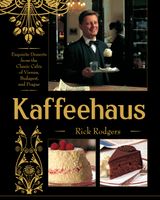Advertisement
Gugelhupf Pan
Appears in
By Rick Rodgers
Published 2002
At a glance, these will remind you of the typical American fluted tube cake pan (sometimes called a Bundt pan). However, a Gugelhupf pan is more narrow and a bit taller. They’re usually made of heavy, unlined metal with their diameter designated in metric measurements on the box or stamped somewhere on the pan. Kaiser is a very reliable brand. The Gugelhupf pan I’ve used most often is the common 9-inch/22-centimeter (12-cup capacity) size, but some recipes (such as Sandtorte) bake best in the smaller 8-inch/20-centimeter (8-cup capacity) pan. If you buy a pan with a nonstick surface, reduce the oven temperature by 25°F, as the dark surface of the pan holds the oven heat, and can make the exterior of the cake brown too quickly. Don’t be concerned about the lack of a nonstick surface in a traditional Gugelhupf pan. The heavy metal construction encourages even baking, and if the pan is buttered and floured properly, you won’t have any problem unmolding the cake. You can substitute the American fluted cake pan for a Gugelhupf pan—do not fill the pan more than two-thirds full. The cake in the wider American pan will probably bake in less time, so check it often toward the end of baking to avoid overcooking.

